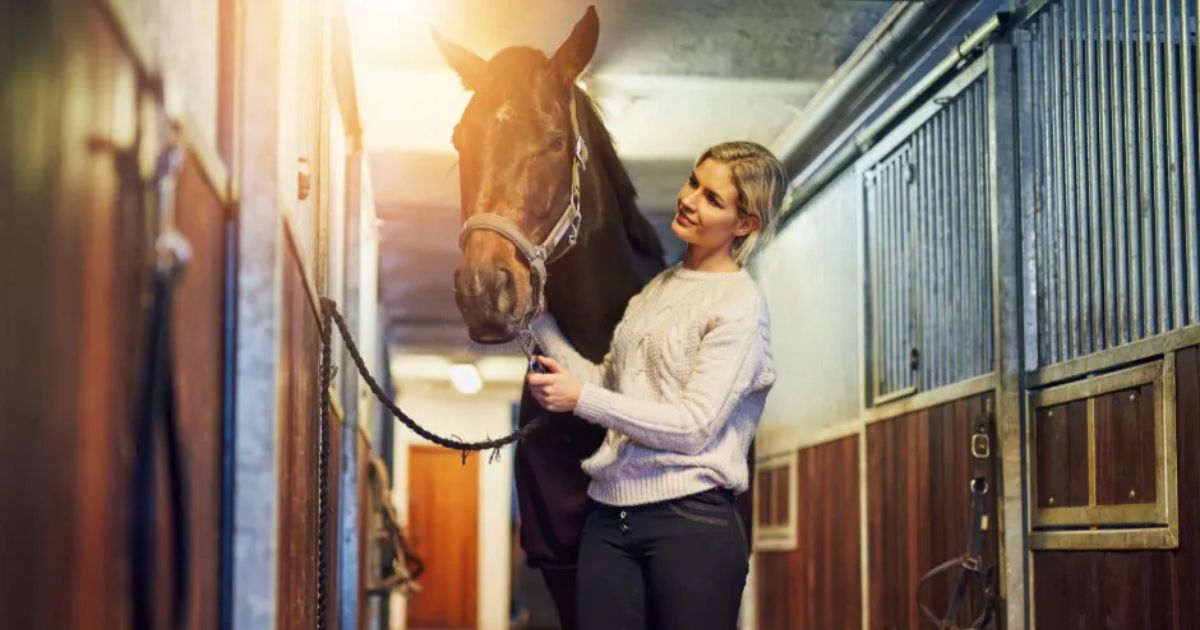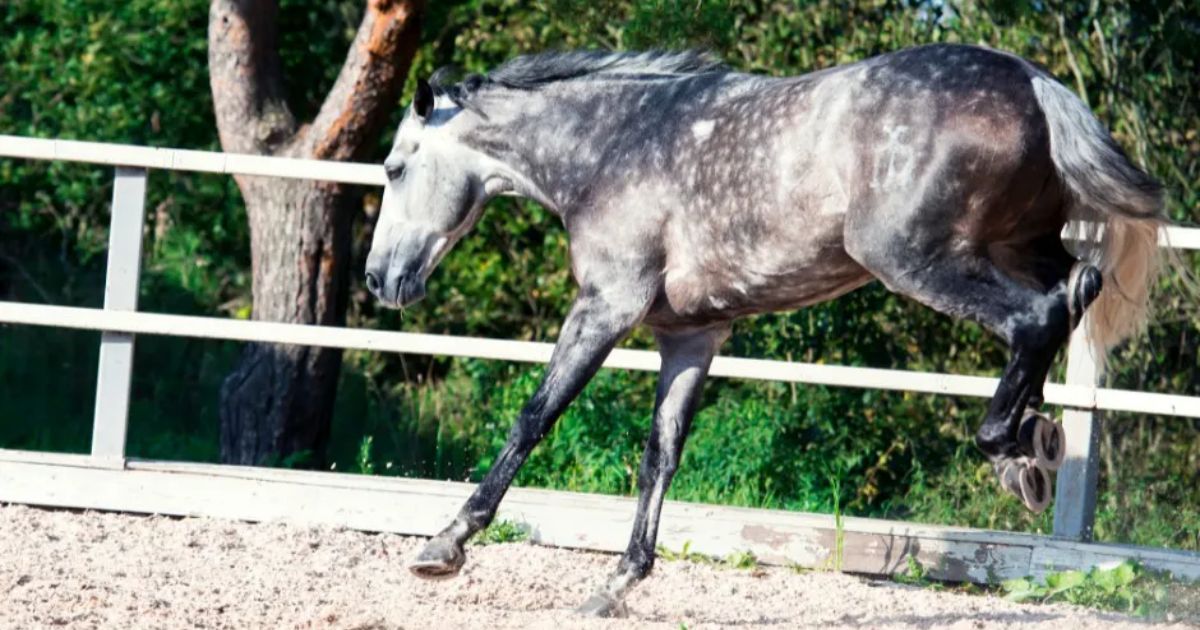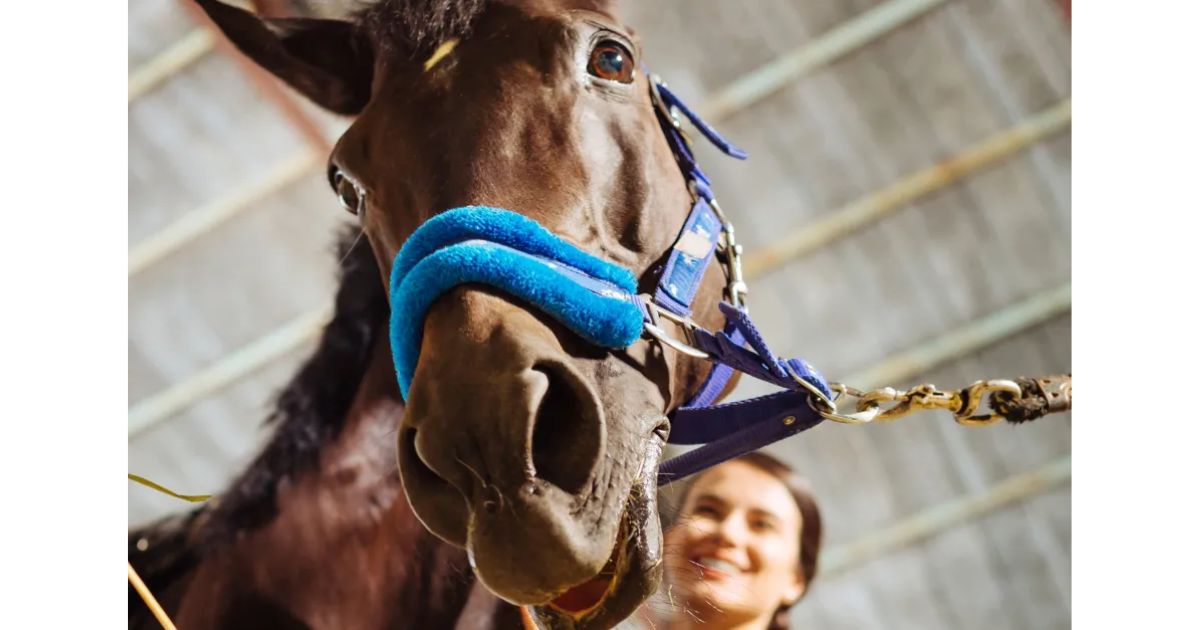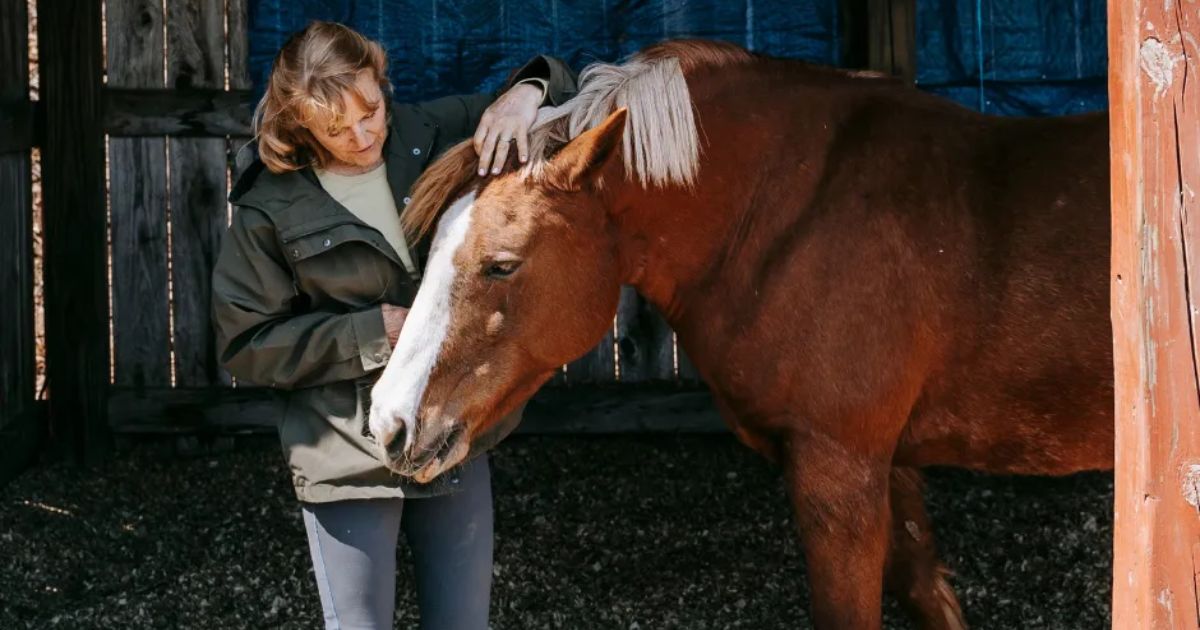Menu

Training and riding horses or ponies that are nervous or stressed is difficult – often impossible. Their learning does not function properly, and their focus is elsewhere than with you. In extreme cases, dangerous situations can arise. According to Camilla Jacobs, help can be right at hand.
Camilla Jacobs is behind the company HorseMama, which offers teaching, lectures, and workshops in harmonious horsemanship. Camilla is a trained Horse in Harmony Trainer with Ute Lehmann and is also the author of the children's book Braveheart moves in (Braveheart flytter ind), which is about horsemanship and how it can be used to interact with the horse in a pleasant, harmonious, and safe way.
I meet many of the aforementioned horses and ponies. Those who are scared of "everything." Those who cannot stand alone in the stable alley. Those who are constantly on alert.
When I meet them, I often also meet horse owners who have difficulty handling their four-legged friends – and who are uncertain about how to proceed. Here, I often recommend Tellington TTouch®, as it is a method that is quite easy to approach. One can actually achieve a lot through self-study.

The method was developed by Linda Tellington-Jones back in 1983 – based on her work with Feldenkrais and then a large portion of intuition. The method is widespread worldwide and has been supported by scientific results over time.
The method consists of both techniques for treating the nervous system and body tissue and various training exercises. The purpose is to activate the cells in the body, to improve cell communication, and to awaken the so-called cellular intelligence (the cells' ability to act without asking the brain first).
Read also: Do you dare to let go of control and let your horse lead the way on a walk?
Tellington TTouch® leads to increased relaxation, balance, mobility, trust, comfort, and body awareness. At the same time, it provides improved posture, behavior, and performance. According to Tellington TTouch®, the method also accelerates healing after injuries and illnesses and maintains mental and emotional well-being.
One can use TTouch on horses – and on other animals and humans. Regarding horses, TTouch can, for example, be used for:
The basic procedure is really simple – it is based on circular movements with fingers (or hands, but here we look at the use of fingers) over the entire body.
Imagine a clock face somewhere on the horse's body – about 3 cm. in diameter. Place your slightly curved index, middle, and ring finger on your "clock" and support your thumb next to the "clock" about 5-6 cm from the other fingers. Then push the skin around with the 3 curved fingers in a circle – clockwise – from 6 o'clock and a full round + a quarter, so you end at 9 o'clock. It is important that it is the skin you push around, so you do not just run your fingers over the fur.
Preferably have your other hand lying on the horse's body opposite the other hand at the same time. It creates balance and increases the effect.
Repeat the movement – either by moving to another random place on the body – or make it in parallel lines on the body. Both work.
Maintain a steady rhythm and constant pressure around the circle and a quarter and make sure that the circles are completely round. And remember to breathe deeply and calmly.
You can see Linda Tellington Jones demonstrate the method here:
How hard you press is a bit of a feeling thing. We talk about the pressure in the movement being on a scale from 1 to 10, but it is a very broad concept in my opinion. It is based on the method being used for both small animals, large animals, and humans. So it is necessary with a pressure "for every taste".
If you follow Tellington's recommendations, then pressure 1 is the pressure you can make if you make the movement on the thin skin under your eye and it feels comfortable. If you make the movement with the same pressure on your arm, there will almost be no indentation in the skin.
To feel a number 3 pressure, then move your fingers from the skin under the eye to the cheekbone. Here you should press hard enough that your middle finger can be clearly felt on the cheekbone.
Read also: Do you remember to vary your rides?
A 2-pressure lies in between these, and so the pressure gradually becomes harder. A 6-pressure is, funnily enough, twice that of 3 (and is normally the hardest pressure used on dogs and cats). When we get up to 9, which is occasionally used on horses, it is worth noting that this is not 3 times as hard as a 3-pressure. Instead of pressing three times deeper than a 3-pressure, the first joints in the fingers are tilted so that the nails point directly into the muscle, and the same pressure is used as a 3-pressure.
My recommendation is that you experiment with the pressures on yourself before you start with the horse. Horses can react more to the deeper pressure, but this is not always the case. If there are pains or inflammation in the body, you may need to start the touch with a 2- or 3-pressure.

When you experiment with the pressure, observe the horse's reactions and use your gut feeling for what it likes. This also applies to your "circle and a quarter." According to Linda Tellington-Jones, clockwise movements are the most effective for both strengthening and rehabilitating the body and for improving self-confidence and performance.
However, counterclockwise circles are sometimes good for releasing tensions. Depending on whether you are left-handed or right-handed, you may feel a preference for one direction or the other – so to get the best benefit, it is a good idea to practice both directions.
Read also: Embarking on the Equestrian Journey: A Comprehensive Guide to Starting Horse Riding
Regarding speed, I recommend that you do it very slowly on very nervous horses and a little faster on those that perhaps just need a little relaxation. When you then start to 'TTouch' your horse, use your gut feeling and do what feels right both in terms of direction and speed.

I experience that the use of Tellington TTouch® often has an immediate effect, but the initial effect is not always enough to completely solve the problem. Some horses and ponies need to get used to receiving Tellington TTouch®. Others are so nervous and stressed that it takes a long time to completely calm the nervous system.
However, the fact is that Tellington TTouch® works. I myself use Tellington TTouch® in most cases where I am asked to help in connection with inappropriate behavior.
There are a sea of variations of Tellington TTouch®. Linda Tellington-Jones has published some good books with descriptions – both in pictures and text – so you can learn the techniques yourself. Some techniques can also be found described in YouTube videos from the TTouch team. You can also read more about Tellington TTouch® at https://ttouch.com
Source: